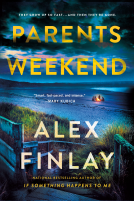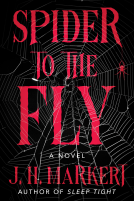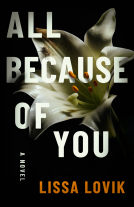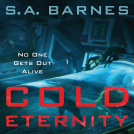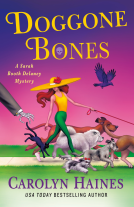
She's Leaving Home
by William Shaw
This title was previously available on NetGalley and is now archived.
Send NetGalley books directly to your Kindle or Kindle app
1
To read on a Kindle or Kindle app, please add kindle@netgalley.com as an approved email address to receive files in your Amazon account. Click here for step-by-step instructions.
2
Also find your Kindle email address within your Amazon account, and enter it here.
Pub Date Feb 11 2014 | Archive Date May 13 2014
Description
The police are called to a residential street in St John's Wood where an unidentified young woman has been strangled. Detective Sergeant Cathal Breen believes she may be one of the many Beatles fans who regularly camp outside Abbey Road Studios. With his reputation tarnished by an inexplicable act of cowardice, this is Breen's last chance to prove he's up to the job.
Breen is of the generation for whom reaching adulthood meant turning into one's parents and accepting one's place in the world. But the world around him is changing beyond recognition. Nothing illustrates the shift more than Helen Tozer, a brazen and rambunctious young policewoman assisting him with the case. Together they navigate a world on edge, where conservative tradition gives way to frightening new freedoms -- and troubling new crimes.
Available Editions
| EDITION | Other Format |
| ISBN | 9780316246842 |
| PRICE | $26.00 (USD) |
Average rating from 8 members
Featured Reviews
 Kristin C, Media/Journalist
Kristin C, Media/Journalist
It’s 1968 London, and a young girl’s naked body has been found by a Nanny in a trash heap, not far away from EMI Studios (Abbey Road Studios), home of The Beatles, and it’s up to DS Cathal “Paddy” Breen to find the killer. Unfortunately, after an incident in which he left the scene during the attack on a fellow cop, he’s not exactly a favorite at headquarters, but he’s trying his best to keep his head down and work the case. He’s also been partnered with Temporary Detective Constable Helen Tozer, and he doesn’t know what to make of this young woman who is so brash, forward, and more than willing to throw her two cents into the investigation, and take more than enough initiative for the both of them. Tozer also has her own tragic reason for being so determined to find the killer of this young girl.
Breen is a man out of time and place, in a city that’s in flux. His father has just passed away, and he’s still reeling from that loss, and a bit adrift after having to care for him for so long. He’s continually bemused by a London that, in spite of retaining its post-war look, has suddenly taken on an explosion of color, sound, and people of all nationalities. His father was an immigrant and his name, Cathal, pronounced Cah-hal is a constant source of embarrassment for him, so he generally goes by Paddy. However, Helen’s refusal to call him anything but Cathal, is, I think, rather sweet (you’ll see why I think this, and it’s a very telling, even endearing scene.) He’s intimidated by the influx of young people into the city, with their long hair and cocked hips, and he feels as if they are silently accusing him of not standing for anything. It causes him to wonder if he’s ever stood for anything.
Regardless, it’s Breen’s dogged pursuit of the truth in this case that carries the day and leads him and Tozer to a group of people committed to stopping the Biafran War, as well as to the victim’s own family. The mystery is a fascinating one, but it was Breen that made this a standout story. Quiet and complicated, he’s just the kind of hero I love to root for, yet he is flawed and very human. Helen and Tozer is also a pleasure, and her willingness to tell off her fellow coppers for their lip is refreshing for a time when women were not all that welcome in that profession.
She’s Leaving Home (A Song From Dead Lips in the UK) is a very strong first effort from William Shaw, who has a background in pop culture journalism, which shows. Beatlemania is going strong in 1968 and his exploration of that obsession, against a background of a country, and a generation in flux, makes for absorbing reading. There are a lot of heavy themes here, but the author handles them so expertly, you won’t realize you’ve just gotten a heady dose of history until it’s over. I can’t wait for the next book-I’ll follow Breen and Tozer anywhere.
 Joe H, Reviewer
Joe H, Reviewer
SHE’S LEAVING HOME William Shaw Mulholland Books ISBN-13: 978-0316246842 Hardcover Mystery
The generally accepted definition of “historical fiction” of any genre includes the provision that the work is set in a time period at least twenty-five years prior to the novel’s publication. It is difficult for those of us of a certain age who remember certain events in the remote past to regard those events as “historical.” So it is with SHE’S LEAVING HOME, a remarkable debut mystery by William Shaw. SHE’S LEAVING HOME is set in 1968 in London, which at the time was an influential hotbed of cultural change. The Beatles were the major reason for this; as one might expect from the title of this exquisitely layered mystery, The band, collectively and individually, exert a subtle role in the proceedings without making a direct appearance in them (other than for one very brief moment).
The primary mover in SHE’S LEAVING HOME is Detective Sergeant Cathal “Paddy” Breen who is off of his feed for a number of reasons, defined and otherwise. Still reeling from the death of his invalid father, who had raised him from his early childhood, Breen finds himself newly and overly sensitive to some of the less appetizing aspects of criminal investigation. He is not particularly well-liked by his colleagues to begin with; his latest offense, however --- deserting a fellow officer who came under attack in the midst of a shop burglary --- makes things even worse. So it is that when Breen is paired with WPC Helen Tozer --- this at a time when female officers were a rarity and regarded as anything but equal to and by their male counterparts --- it is difficult to see the assignment as anything other than a form of subtle punishment, particularly by Breen himself. Tozer herself is not exactly a shrinking violet, and does not mix well with the boys, so to speak. Breen, however, gradually and in spite of himself slowly and gradually warms to her over the course of a homicide investigation. The murder victim is a young woman who is found strangled in a residential area near the Abbey Road studios where The Beatles frequently record. No one seems to know who the girl is, at least until Tozer uses the possible connection to the band’s fan base --- she is a fan, Breen is almost totally unfamiliar with them --- as a means of identifying the victim. After two more violent deaths occur, the case appears to be solved. Breen, however, is uncomfortable with conclusion, and continues to press the investigation onward, even as another case puts demands upon his attention. Tozer, for her part, continues the unofficial investigation with Breen, even after she is assigned elsewhere. Tozer wants to see justice done for the victim, a feeling which is in part motivated by her own history, which includes the still- unsolved murder of her younger sister which occurred some years before. As Breen and Tozer follow a tenuous evidentiary trail to a surprising and tragic conclusion, they each learn something about themselves, and each other.
Shaw is highly respected as a commentator on popular culture, but one hopes from the depth of SHE’S LEAVING HOME that his foray into the mystery genre is not a solitary one. Breen is a complicated character, and further explorations into his personality would certainly be most welcome. Additionally, SHE’S LEAVING HOME leaves two secondary mysteries unsolved at its conclusion, either or both of which could provide fodder for an additional volume or two in the series. Fingers crossed.
Reviewed by Joe Hartlaub
© Copyright 2014, The Book Report, Inc. All rights reserved.
“How are you doing with that women’s libber of yours, Paddy?” asked Jones. “Wouldn’t mind seeing her burning her bra.”
William Shaw’s title She’s Leaving Home references a Beatles song, and it’s an appropriate choice given the subject matter and the times in which this excellent crime novel is set. It’s 1968, London, and the naked body of a teenage girl is found stuffed under a mattress right next to some flats and around the corner from EMI Studios, located on Abbey Road. A couple of details about the placement of the body don’t add up, and troubled CID DS Paddy Breen is assigned to the case. Paddy hails from Ireland but now works in D Division where he’s a distrusted, disliked outsider. Bailey, who ineffectually heads the station, is also disliked and has no control over the Division coppers who make fun of him behind his back. When the novel opens a murky incident which involves Breen and the very much-liked Sergeant Prosser has taken place. The incident, a robbery, only underscores the contempt aimed at Paddy, and he’s warned by a friend to get out of Murder and D Division and get into drugs where all the growth and excitement will be:
We’re on the tip of the iceberg. Come aboard, Paddy. Ship’s about to sail. Murder is just the same old same old. And I’m on vice. That’s even worse. Vice is done for. This is the permissive society. When there’s people starkers on stage up at the Shaftesbury Theatre singing about the age of the Hairy-Arse, who needs to pay for it anymore? Did you go? No? I did. God, there’s some ugly women in that. I felt like shouting, ‘For God’s sake out your clothes back on.’ In a couple of years, we’ll be like Sweden, I tell you. The point is, nobody even has to pay for it these days. These young girls, nowadays, they’ll fuck anybody. Nobby Pilcher’s got it right. Growth industry. I’m serious, Paddy. You need to get out of D Div.
While Breen investigates the murder of the teenager, he is accompanied by Temporary Detective Helen Tozer, originally from Devon, who wants to work murder. Women PCs are “only on admin and social work. If a crime involved a kid, you’d ask one on them in. Apart from that they never came into a CID office.” Tozer, who has personal reasons for wanting to work in murder, must face an avalanche of attitudes from her fellow police officers. Repeatedly ordered to make the tea for the male officers, it’s also assumed she’s promiscuous when she identifies a stain as sperm on a dress found in the bins near the victim. Her suggestions are treated as a joke and the implications are that she’s either good for fresh cups of tea or as a potential sex partner. Fortunately, she’s thick-skinned enough to let the insults slide off her back. While Breen expects that the male officers will taunt Tozer, he’s unprepared for the venom directed at Tozer by one of the female secretaries.
Tozer and Breen make a great team, and a great deal of the novel’s interest can be found in the way Breen learns to bend to Tozer’s suggestions as they investigate the opaque world of crazed Beatles fans–the masses of young girls who camp outside the homes of their idols and sleep outside of the recording studios hoping for a glimpse of the Beatles as they arrive. While Breen represents the fossilized world of Authority, Tozer can relate to Beatlemania.
One of the refreshing aspects of the novel is the total lack of 60s nostalgia, so forget the up-beat score of Pirate Radio. In Shaw’s world, the 60s is an unpleasant place–racism and sexism are unchecked and even applauded. We see a world in flux, so while young men with long hair walk around in flowered shirts and flared trousers, and greasers and their girls snog publicly, the older generation tut and complain and rain judgments down about the new permissive society where anything goes. There’s an ugliness to this world found in the small-minded callousness of many of the characters Breen and Tozer question in the course of the investigation. The judgmental and primly unpleasant Miss Shankley, for example, who lives in the flats where the body was found, assumes that the naked girl was a prostitute, while to members of D Division, she’s just another “naked bird.” But even the smaller details coat the story with the minutia of life in the 60s–from coin-operated electric meters to pregnant women smoking as a matter of course.
West London was full of color. Each year the colors got louder. Girls in green leather miniskirts, boys in paisley shirts and white loafers. New boutiques selling orange plastic chairs from Denmark. Brash billboards with sexy girls in blue bikinis fighting the inch war. A glimpse of a front room in a Georgian house where patterned wallpaper had been overpainted in yellow and a huge red paper lampshade hung from the ceiling. Pale blue Triumphs and bright red minis parked in the streets.
Around Clerkenwell the color faded. The old monochromes of post-war London returned. Still flat-capped and gray. East London continued its business.
Breen and Tozer make a terrific team, and I was much more interested in them, I’ll admit, than the solution to the crime. He’s lonely and attracted to this young woman who’s a bit out of his league, and although the premise isn’t overworked, it’s clear that Tozer is the new kind of woman–a woman who wants to be taken seriously, and a woman who wants a career–not a family in this age when “women officers aren’t allowed to drive cars.” The plot is also a commentary on the shifting face of crime in Britain with celebrity drug-busts and young officers, thrilled by a break from tedious routine, excited to participate in a car chase or a murder. Author William Shaw, a journalist, has written other books which he terms “narrative non-fiction.” She’s Leaving Home is also published as the title A Song From Dead Lips and is the first of three planned books set in London 1968 and featuring DS Breen and PC Tozer. I’m in for the duration, and for anyone scouting for material out there, this book would make a great television series.
review copy
 Denise P, Reviewer
Denise P, Reviewer
This book was originally published last year in the UK under the title "A Song From Dead Lips" and I vaguely remember seeing the UK version of the cover. This book takes place in 1968 and follows Detective Sergeant Cathal Breen as he investigates the death of a teenage girl whose body was found near the famous Abbey Road recording studio. Breen had just acted cowardly during an attempted robbery and is now hoping this investigation will put him back in the good graces of his department. Breen finds himself stuck with Constable Tozer a young and eager policewoman to help out his investigation.
You can definitely see that this book takes place in 1968 just by the way that the male characters talk about and treat females, and by the way some characters are outright racist. The sexism and racism was a part of the culture back then (and some say it still is) and Shaw does a good job of highlighting it in the background of the story.
I loved the relationship between Breen and Tozer. I really liked that in the beginning Breen was really annoyed by Tozer but eventually he grew used to her and even began sticking up for her. I felt like partnering up with Tozer for the investigation really helped Breen move past his difficulties and opened him up a bit. The two of them together made this book shine. While I was reading this I thought that following them would be a great series and then I found out that this was actually going to be a trilogy. You can imagine my excitement at learning that.
I felt like the mystery behind who killed the girl wasn't that difficult to figure out but why they killed her was a true mystery. I didn't lose my interest in this book because I figured out who killed her because of the fact that I had no clue why. I also loved all the action towards the end. I was kind of surprised at what happened in the end with Breen and Tozer (I mean Tozer's decision, not the other thing. This will only make sense if you read the book. Don't mind my rambling). I am really excited to have found a new series (trilogy) to enjoy. I look forward to reading the next book in the trilogy.
 Rosemary S, Librarian
Rosemary S, Librarian
She’s Leaving Home by William Shaw. Published by Mullholland
cayocosta72 ♦ November 19, 2013 ♦ Leave a Comment
In 1968, Abbey Road is the place to be if you’re a Beatles fan. Every day young women camp out in front of the recording studio where the band makes records, hoping for a glimpse of the Fab Four. Police are called in when a young woman is found strangled in the area. D.S. Cathal Breen believes she is one of the “groupies”. Breen has a lot on his plate, branded a coward by his colleagues, solving this murder may be his last chance at redemption.
Shaw offers a look back at the swinging sixties in this period police procedural. Tightly plotted with a conflicted hero in turbulent times, promises to keep readers engaged
 J F, Bookseller
J F, Bookseller
Prepare to be transported back to the heyday of the swinging Sixties in this thoroughly enjoyable debut by William Shaw. Drawing on the sights and sounds of this iconic era, with a musical soundtrack resonating with references to the age of Beatlemania and the hugely influential Abbey Road studios, Shaw has conjured up a gripping crime thriller infused with period detail. I think to simply draw comparisons with Life On Mars vis-a-vis the police element is fair to an extent- the novel is peppered with references to racism, homophobia, sexism and the more Neanderthal methods of policing, all in what we view now as the non-PC language of the time- but I think this does the novel a bit of a disservice. As the larger, and indeed more global, themes of the novel become apparent, and the strength of the police characters generally have a more intrinsic depth to them, Shaw rises above a mere whimsical trip back to the past and produces something altogether more gritty and compelling.
The main police protagonists, DS Cathal Breen and WPC Helen Tozer are well-drawn and carry the weight of the plot with ease. Breen is a deep and thought provoking character, set apart from his more brutish colleagues in the murder unit, often being at the brunt of their misplaced humour or vitriol. At times he shows a distinctly more human and empathetic approach to both victim and the suspects, and genuine physical responses to the criminal acts he bears witness to. The interplay between him and the ballsy Tozer, the first woman assigned to the murder unit, is beautifully realised combining a mixture of humour, camararderie and emotional involvement, which makes the scenes between these two in particular, one of the most satisfying aspects of the book. Breen is haunted by demons, but Tozer has also experienced a dark event in the past, which has caused her to carve out a career in the police service. The grittier aspects of this investigation has serious effects on, and consequences to both officers that Shaw effortlessly inveigles into the main, and for the most part, intriguing and disturbing plot making reference to the social prejudices of the era and drawing on aspects of the Biafran conflict- a political hotspot of the era.
I had certain pre-conceptions of this book, largely because of the period it was set in, thinking it might just be a run-of-the-mill sixties police procedural, which were confidently dispelled by the weight of the issues contained within the book, and the exceptional characterisation throughout. Shaw recreates the sights and the sounds of the era with ease and the prejudices of the time and I found this a most enjoyable and compelling read, drawing on a historical conflict that I personally had little knowledge of. A highly readable debut and I hope to see more in this series.
(I reviewed the UK edition of this title- review posted on my blog, on Amazon UK/US, GoodReads and at waterstones.com)




